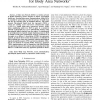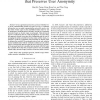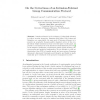61 search results - page 6 / 13 » Security Properties of Two Authenticated Conference Key Agre... |
TITB
2010
13 years 2 months ago
2010
A Body Area Network (BAN) is a wireless network of health monitoring sensors designed to deliver personalized health-care. Securing inter-sensor communications within BANs is essen...
ICC
2009
IEEE
14 years 2 months ago
2009
IEEE
—A key agreement protocol is a protocol whereby two or more communicating parties can agree on a key or exchange information over an open communication network in such a way that...
CADE
2004
Springer
14 years 8 months ago
2004
Springer
Abstract. Automated tools for finding attacks on flawed security protocols often struggle to deal with protocols for group key agreement. Systems designed for fixed 2 or 3 party pr...
SIGMOD
2004
ACM
14 years 7 months ago
2004
ACM
Secure communication guaranteeing reliability, authenticity, and privacy in sensor networks with active adversaries is a challenging research problem since asymmetric key cryptosy...
CHARME
2003
Springer
14 years 26 days ago
2003
Springer
Intrusion-tolerance is the technique of using fault-tolerance to achieve security properties. Assuming that faults, both benign and Byzantine, are unavoidable, the main goal of Int...



